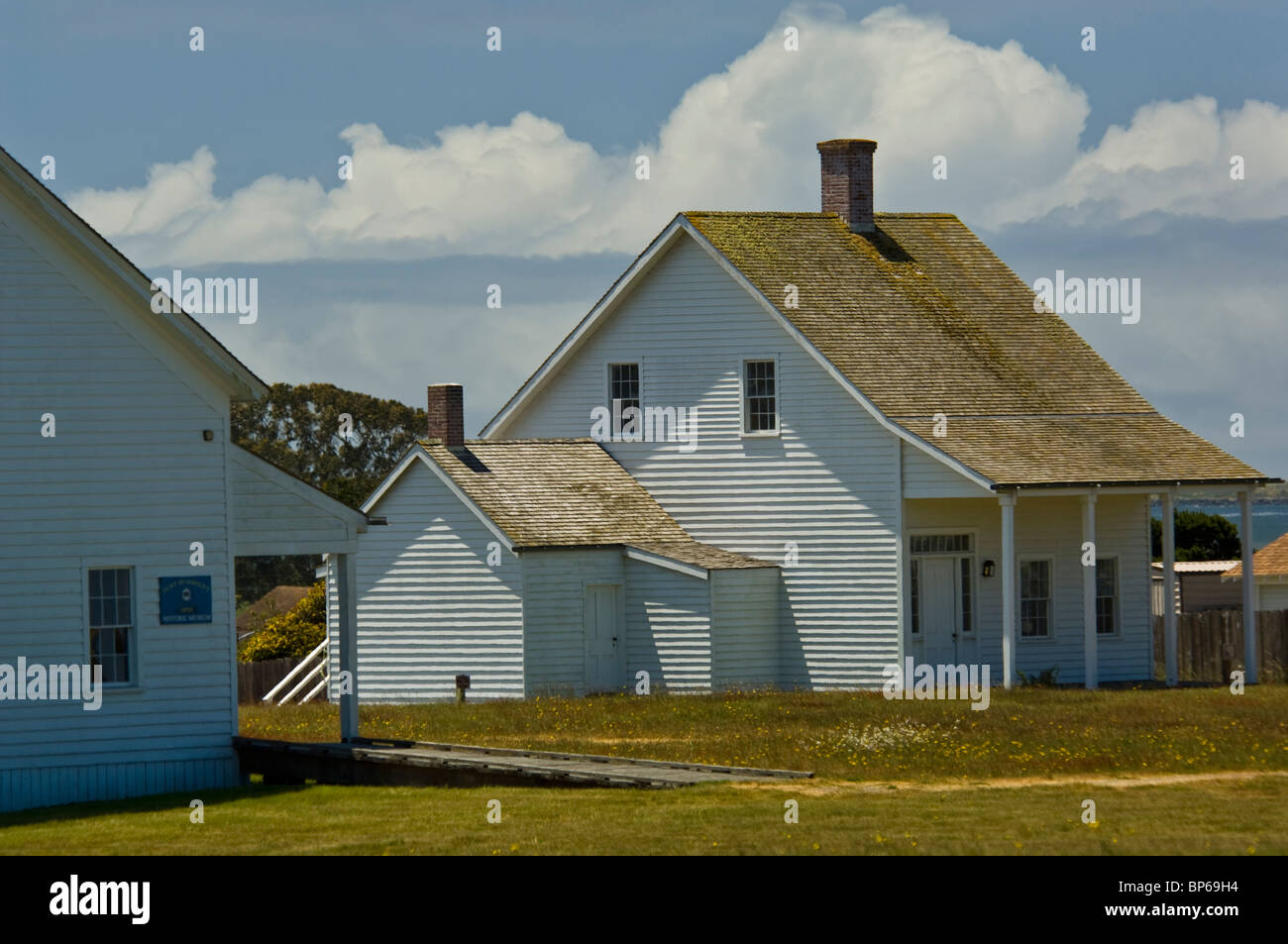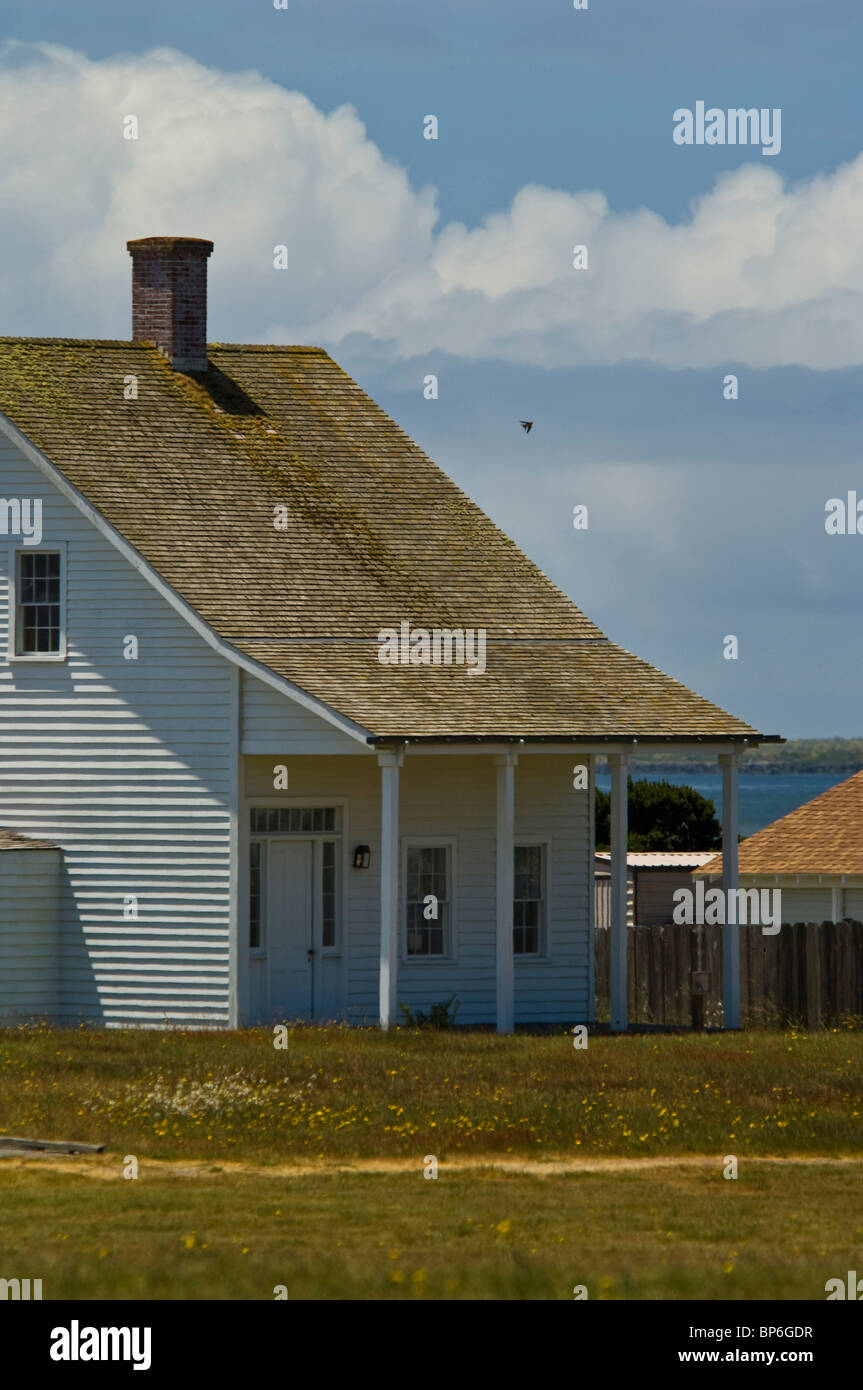
Fort Humboldt: A Silent Sentinel of California’s Complex Past
Perched on a windswept bluff overlooking Humboldt Bay, Fort Humboldt stands today as a quiet testament to a tumultuous era. Its weathered log structures, painstakingly reconstructed, whisper tales of isolation, ambition, and profound conflict. This seemingly modest outpost, established in 1853, played a pivotal role in the shaping of California’s rugged northern frontier, but its legacy is far more complex than simple military history. It is a place where the legend of a future president intersected with the tragic displacement of indigenous peoples, a microcosm of America’s westward expansion, brutal and transformative.
Grant’s Wilderness Exile: The Seed of a Legend
Perhaps the most enduring and surprising anecdote connected to Fort Humboldt is its brief, inglorious association with Ulysses S. Grant. Before he commanded the Union armies to victory and occupied the Oval Office, Captain Grant, a West Point graduate with a checkered military career, found himself stationed at this remote outpost from September 1853 to April 1854. It was not a posting he relished.

Grant’s time in California was marked by profound personal struggle. Separated from his wife, Julia, and their children, he battled loneliness, boredom, and a growing dependence on alcohol. He had been sent west after the Mexican-American War, bouncing between various frontier posts. Fort Humboldt, surrounded by dense redwood forests and frequent fog, offered little in the way of distraction or advancement. His duties involved overseeing the mundane logistics of a small garrison, far removed from any significant military action.
Historian Brooks D. Simpson, in his work on Grant, notes that this period was "one of the most frustrating and depressing of his entire life." Grant himself, writing years later in his memoirs, recalled the "monotony and gloom" of his West Coast service. The isolation was intense; communication with the outside world was slow and unreliable, relying on infrequent steamship arrivals. Letters from Julia would take months to reach him, further deepening his despondency.
His superior officer, Colonel Robert Buchanan, was a strict disciplinarian who held a low opinion of Grant’s administrative skills and suspected his drinking problem. The friction between them, combined with Grant’s profound homesickness and professional stagnation, culminated in his resignation from the army in April 1854. He departed Fort Humboldt, a defeated and disillusioned man, unaware that this lowest point in his career would precede his meteoric rise to national prominence just a few years later. His presence, however brief and unhappy, casts a long shadow over the fort’ making it a unique stop on the historical trail of one of America’s most iconic figures.
The Crucible of Conflict: Why Fort Humboldt Was Built
Grant’s personal struggles, while compelling, were but a footnote in the larger, more brutal narrative unfolding across California’s northern frontier. Fort Humboldt was not established for the comfort of its officers, but as a direct response to the escalating tensions and violence that characterized the Gold Rush era.
California, a newly acquired territory following the Mexican-American War, saw its population explode with the discovery of gold in 1848. The ensuing influx of prospectors, settlers, and opportunists rapidly transformed the landscape and brought them into direct, often violent, contact with the indigenous peoples who had inhabited the region for millennia. The Humboldt Bay area, rich in timber and strategically located for shipping, became a focal point for this expansion. Towns like Eureka rapidly sprung up, attracting thousands.
The federal government, overwhelmed by the rapid changes and the escalating conflicts, established a series of military posts across the state. Fort Humboldt, built of locally sourced redwood logs, was one such outpost. Its primary directives were ostensibly to protect the burgeoning non-Native settler population from "Indian depredations" and, conversely, to "control" the Native American tribes, often by forcing them onto reservations or removing them from their ancestral lands.
The reality was far grimmer. The arrival of settlers brought with it disease, environmental degradation, and a relentless demand for land and resources. The indigenous populations of the region – including the Wiyot, Hupa, Yurok, Karuk, Chilula, and many others – found their traditional ways of life under siege. What ensued was a period often referred to by historians as the "California Genocide," a state-sanctioned and civilian-executed campaign of violence that drastically reduced the Native American population.

The soldiers at Fort Humboldt, though not always directly involved in the most horrific massacres, were an integral part of this system of dispossession. Their patrols, skirmishes, and the enforcement of reservation policies directly contributed to the decimation and displacement of indigenous communities. The fort represented the armed might of a conquering nation, asserting its dominion over lands that had never truly been ceded.
Life on the Edge: The Reality of Frontier Service
Life for the soldiers stationed at Fort Humboldt was far from glamorous. The isolated nature of the post, coupled with the rugged environment, presented formidable challenges. The weather was often harsh: frequent rain, dense fog, and cold winds swept in from the Pacific. Supplies were irregular, arriving by sea, making essential goods and even mail a precious commodity.
The fort itself was a collection of log buildings: barracks, officer’s quarters, a hospital, a storehouse, and a guardhouse, all built from the abundant local redwood. These structures, while sturdy, offered basic amenities at best. Sanitation was rudimentary, and disease, particularly respiratory illnesses and dysentery, was a constant threat.
A typical day involved drill, guard duty, maintaining the fort, and, most significantly, patrolling the surrounding territory. These patrols were arduous, traversing dense forests, crossing swollen rivers, and often lasting for days or weeks. Their purpose was multi-faceted: to track down Native American groups deemed hostile, to escort settlers, to protect supply lines, and to enforce the often-brutal policies of forced removal.
Boredom was a significant enemy, particularly for the enlisted men. Without the intellectual distractions or social standing of the officers, many found solace in drinking, gambling, or the limited company of their fellow soldiers. Desertion rates at frontier posts were often high, a testament to the harsh conditions and the psychological toll of isolation. The romanticized image of the frontier soldier often obscures the grueling, unrewarding reality of their daily lives.
The Dark Legacy: Acknowledging the Uncomfortable Truth
The most profound and disturbing aspect of Fort Humboldt’s history lies in its role within the broader context of the California Indian Wars. While the fort’s primary mission was framed as "keeping the peace," that peace was overwhelmingly achieved through the subjugation and eradication of Native American resistance.
The Wiyot people, whose ancestral lands encompassed Humboldt Bay, were particularly impacted. Their villages were raided, their resources plundered, and their populations decimated. One of the most horrific events, the Indian Island Massacre of 1860, where unarmed Wiyot women, children, and elders were slaughtered while they slept during a traditional ceremony, occurred just miles from Fort Humboldt. While the fort’s soldiers were not directly involved in this particular atrocity, the massacre was a direct consequence of the climate of racial hatred and violence that the military presence, including Fort Humboldt, failed to prevent and, in many ways, enabled.
The legacy of Fort Humboldt, therefore, is not merely about military strategy or the trials of a future president. It is inextricably linked to the systematic violence, forced removal, and cultural destruction inflicted upon California’s indigenous peoples. Modern interpretations of the fort’s history strive to acknowledge this uncomfortable truth, moving beyond a purely Eurocentric narrative to incorporate the voices and experiences of those who suffered.
Decline, Preservation, and Modern Interpretation
By 1865, with the end of the Civil War and the waning of major conflicts with Native American tribes in the region, Fort Humboldt’s strategic importance diminished. The post was abandoned, its buildings left to decay or be dismantled for their valuable redwood timber. For decades, the site faded into obscurity, reclaimed by the encroaching forest.
It wasn’t until the mid-20th century that efforts began to preserve and interpret the remnants of this important historical site. In 1945, the land was acquired by the State of California, and Fort Humboldt State Historic Park was officially established. Archeological digs and historical research provided the basis for the meticulous reconstruction of several of the original log structures, including the officer’s quarters, barracks, and guardhouse, allowing visitors to glimpse what the fort would have looked like in its operational heyday.
Today, Fort Humboldt State Historic Park serves as an open-air museum. Visitors can explore the reconstructed buildings, view artifacts from the period, and read interpretive panels that delve into the fort’s complex history. The park also houses a logging museum, recognizing the region’s other significant industry.
The challenge for the park’s interpreters is to present a balanced and honest account of Fort Humboldt’s past. It’s a place where the grandeur of national history (the Grant connection) coexists with the painful memory of colonial violence. The park strives to acknowledge both narratives, fostering an understanding of how the actions of the past continue to resonate in the present. It encourages reflection on the choices made, the lives affected, and the enduring impact of westward expansion on all involved.
Fort Humboldt, once a remote and isolated outpost, now stands as a crucial educational site. It is a silent sentinel, urging us to remember not just the well-known figures and military maneuvers, but also the often-unheard stories of those who were dispossessed. Its weathered logs and windswept grounds compel visitors to confront the difficult, multifaceted history of California, offering a vital space for remembrance, understanding, and the ongoing dialogue about truth and reconciliation.


